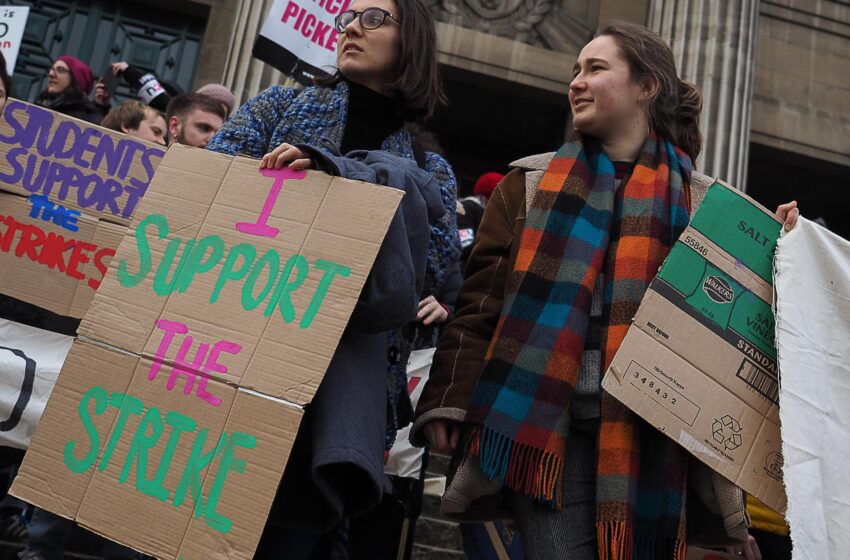
University of Leeds strikes show no sign of resolution
As I walked onto campus for the first day of teaching of the semester I passed a group of striking university staff by the School of Business and was handed a leaflet about UNISON strikes. The leaflet explained that strikes were being held during what was, for most students, the first week back. So, the strikes continue…
UNISON is the union for public sector employees and is the largest union in the country. On their website they explain that: “We represent members, negotiate and bargain on their behalf, campaign for better working conditions and pay and for public services”.
The university workers represented by UNISON include cleaners, IT technicians, administrators, library staff and others supporting student learning.
The strikes, for the most part, are due to poor pay levels and pay not aligning with inflation in the last decade. Strikes can also occur over the conditions of work, with many objecting to zero-hour contracts with heavy workloads. In the last month, schools in Scotland have closed due to strikes involving non-teaching staff and last month, Northern Irish healthcare workers were on a 48-hour strike due to pay disputes.
Of course, to the readers of The Gryphon, it is the university strikes that are likely to impact our lives the greatest. UNISON alongside UCU represent a majority of staff working in higher education. The University of Leeds was one of 17 universities involved in the strikes which took place during the first week of the new semester. Strikes can exist in multiple forms, from not delivering lectures to marking boycotts.
For the new academic year, many UNISON members voted against the offered pay rise of between 5-8% as it does not align with recent rates of inflation. The strikes will continue until pay demands are met.
Of course, the impact of this underpayment is felt across the whole university. Students last year felt a serious impact on their contact hours and their grades due to the strikes. I, myself, didn’t receive my final module grades until around two weeks before university started up again for the new year and there were many cases in which graduating students graduated without knowing their overall degree classification.
In fact, out of the nine students living in my second-year house, six out of nine did not get their grades back in time. Interestingly, these six were taking social science or art degrees in which the modules were mostly essay examinations. After speaking to a Chemical Engineering student, I learned that she not only got her grades back on time but she “hardly felt the impact of strikes all year”.
Although the impact on students seems unfair, we must remember the unfair treatment that university staff are also experiencing. Therefore, this year we must stand with the striking staff and educate ourselves on their reasons for striking. We need to acknowledge that it is completely reasonable to voice annoyance at the strike’s disruptions but also to direct this annoyance at the governing bodies and not the strikers, who are victims of this.
So what should we expect from strikes this year? As pay disputes have not yet been resolved we are likely to see equal levels of striking this year. Furthermore, UNISON published which universities held additional strike dates on top of the coordinated strike dates and the University of Leeds significantly holds the top spot as the biggest striking university. For students new to Leeds, the picketing can mostly be seen by the Parkinson Building and the striking staff usually garner plenty of support. However, perhaps progress is being made as UNISON labels the resignation of the university’s vice-chancellor as a “positive step”.

